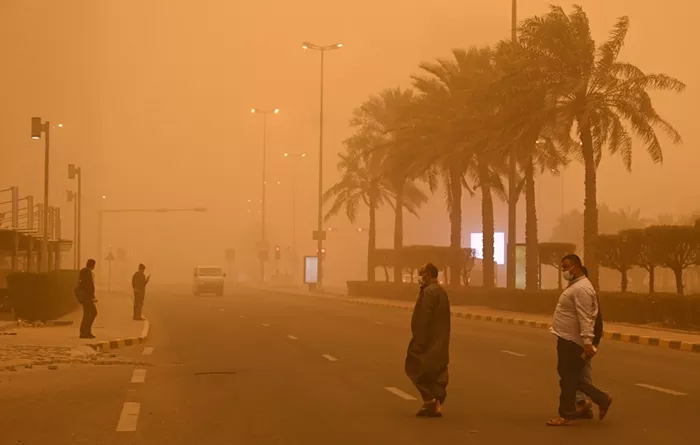Saharan dust, fine mineral particles from the Sahara Desert in North Africa, is currently moving toward Florida after already affecting Puerto Rico and the U.S. Virgin Islands.
This annual natural phenomenon occurs when strong winds lift dust into the atmosphere, forming the Saharan Air Layer, which transports the dust thousands of miles across the Atlantic Ocean.
What to Expect from the Dust Arrival
As the dust plume reaches Florida and parts of the U.S. Gulf Coast and Southeast, it will likely cause hazy skies, reduced visibility, and lower air quality.
The dust also enhances the colors of sunsets, creating striking visual effects. Interestingly, the dry air carried by the dust can suppress the formation of tropical storms and hurricanes by limiting moisture availability, which may reduce storm activity during hurricane season.
Health Implications of Saharan Dust
The dust is a form of particulate pollution, containing fine particles (PM2.5 and smaller) that can penetrate deep into the lungs and even enter the bloodstream.
This exposure can trigger inflammation and oxidative stress in the respiratory system, exacerbating conditions such as asthma, chronic bronchitis, and chronic obstructive pulmonary disease (COPD). Vulnerable groups include children, the elderly, and individuals with pre-existing respiratory or cardiovascular diseases.
The dust contains microbial components, metals, and allergens that can activate immune responses, potentially causing coughing, wheezing, shortness of breath, and allergic reactions. Chronic exposure may lead to airway remodeling and long-term lung damage.
Practical Health Recommendations
To minimize health risks during Saharan dust events:
- Stay indoors as much as possible, especially if you have respiratory conditions.
- Use a high-efficiency particulate air (HEPA) filter indoors to reduce indoor pollution.
- Wear a well-fitted dust mask, such as a KN95, when outdoors.
- Keep necessary respiratory medications, like inhalers, readily accessible.
- Monitor local air quality reports and limit outdoor activities when dust levels are high.
By following these precautions, individuals can protect their respiratory health while appreciating the natural atmospheric phenomenon.
Read more:
- Phosphorus: Benefits, Sources, and Supplement Cautions
- Measles Exposure at Mall of America Sparks Health Alert
- Rising Marijuana Use Among Older Adults: Risks and Advice


